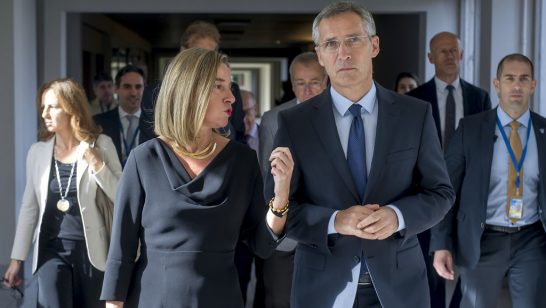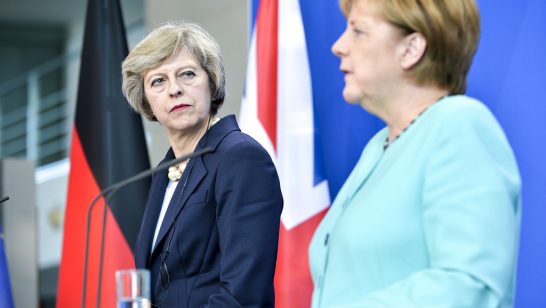
On 12th June, during a meeting in the White House, US president Donald J. Trump and Polish president Andrzej Duda signed a declaration stressing the enduring character of the US military presence in Poland and increasing its size. Around 1,000 US troops will be added to the roughly 4,500 already stationed on a rotational basis. Contrary to criticism surrounding the months-long negotiations of the arrangement, the intention is not to create a bilateral alternative to broader defence cooperation in NATO; nor is the move aggressive towards Russia, despite Russian claims to the contrary. It will strengthen deterrence on NATO’s eastern flank in line with NATO policies adopted in the wake of Russian efforts to forcibly spread its influence and dismantle the Euro-Atlantic security system.
A step towards a “viable reinforcement strategy”
The Polish-American agreement focuses on enabling a swift deployment of larger units in a crisis and enhancing support for the US armoured brigade and other forces rotating in Poland and the region. The US will station more logistic units in Poland, while Poland will upgrade and expand infrastructure necessary for the reception, stationing, and movement of US and NATO forces (such as barracks, depots, and aerial port of debarkation). The American mission command element in Poland – currently tasked with coordination of exercises on the eastern flank – will expand into a Division Headquarters capable of commanding combat operations. The US will also establish an Intelligence, Surveillance, and Reconnaissance squadron of MQ-9 drones. This will improve situational awareness on the eastern flank and help provide early warning of possible aggression. American Special Forces Group in Poland will also increase.
Although these actions fall short of the permanent stationing of a US armoured division (some 15,000 troops) that Poland initially proposed to host, they will facilitate an assembly of such a unit in a contingency situation. Ensuring a smooth flow of reinforcements to Poland will not only help defend the country but also, given its location, be key for any effort to aid smaller Baltic States. Increased US presence in Poland and Polish investments in training ranges will also widen opportunities not only for Polish forces, but for NATO, regional allies, and partners to exercise with American troops, too.
Closer Polish-American defence cooperation will thus help implement the deterrence posture agreed at the 2016 NATO summit in Warsaw. When announcing the decision to deploy rotationally four battalion-sized battlegroups in Poland and the Baltic States, Allies added that these forces will be “underpinned by a viable reinforcement strategy.” As this posture relies on limited forward presence, NATO might be unable to stop a large-scale aggression in its tracks. It should, however, have the ability to move rapidly bigger forces to restore the territorial integrity of an ally quickly. This would clearly signal to Russia that it should not be tempted to use its regional military superiority to quickly grab a piece of NATO territory and create a fait accompli. The longer Russia would be able to hold its gains, the more it might hope to divide Allies, discourage their response, and thus undermine NATO.
Good news for NATO cohesion
This increased US military footprint in a vulnerable part of Europe is good news for transatlantic relations, particularly during a time when relations are increasingly strained. All those who have feared that President Trump might reduce the US’ commitment to European security should welcome the deployment. The obvious implication of geography is that by defending Poland and the eastern flank, the US defends the whole of Europe and NATO.
Claims that a Polish-American deal would bypass NATO have also overlooked the fact that both countries held consultations with NATO officials and members throughout the bilateral negotiations. The deal should satisfy those Western European Allies who feared that a bigger and permanent presence would exceed the limitations from the 1997 NATO-Russia Founding Act (NRFA). Even though Russia has long been violating the NRFA by invading Ukraine, and in multiple other ways, increased US deployments on the eastern flank will remain well below any reasonable understanding of the term “substantial combat forces.” Russia’s large-scale exercises, continuous enhancements of Russian Western Military District and presence of some 300,000 troops there are useful points of reference.
Moreover, contrary to a number of past assertions, Poland will not make any direct payments to the US in return for stationing of American forces. While Poland originally offered to contribute up to $2 billion to facilitate deployment, it made clear that funds would be invested in infrastructure to host and support American troops. Other US allies such as Germany, Japan, South Korea or Norway have long shared the costs of such construction, as well as of annual presence of US forces. Under the new agreement, Poland will pay fully for the former and provide support above NATO host-nation standard as regards the latter (no specific amounts have been made public). While this substantial contribution might have been motivated in part by a desire to appeal to Trump’s personal preferences (similarly in suggestions by Polish officials that potential permanent US base could be named “Fort Trump”), it clearly corresponds to a broader American insistence on increased burden sharing by allies.
The way forward
NATO members should welcome enhanced US presence in Poland, as the Alliance’s Secretary General did. But as important as this enhancement is, it is not a silver bullet. Given that the regional military balance favours Russia, even if the US stationed a full division in Poland, it would have to be reinforced eventually in a conflict. The US cannot and does not want to shoulder that burden alone. Poland and other eastern flank countries should continue to step up their defence investments, but the scale and complexity of the Russian challenge calls for further adaptation of the whole Alliance. One issue requiring greater NATO efforts is the development of a comprehensive response to Russian anti-access/area denial (A2/AD) systems. Capabilities such as long-range air defences or land-attack missiles could impede the deployment and operations of allied troops on the eastern flank and undermine the viability of NATO reinforcement altogether.
The development and sustainment of credible military response options are key for limiting the risk of miscalculation and deterrence of opportunistic aggression, but also as a prerequisite for effective dialogue. If Russia concludes it could eventually reach its aims through coercion, or even direct use of force, it will not engage in talks in good faith. Increased and enduring US presence in Poland is therefore a right step towards stabilising the security situation in Europe.
The opinions articulated above also do not necessarily reflect the position of the European Leadership Network or any of its members. The ELN’s aim is to encourage debates that will help develop Europe’s capacity to address pressing foreign, defence, and security challenge.



